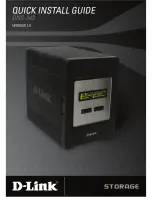
Key software features
131
Rate limiting
This feature controls the maximum rate for traffic transmitted or received
on an interface. Rate limiting is configured on interfaces at the edge of a
network to limit traffic into or out of the network. Traffic that falls within the
rate limit is transmitted, while packets that exceed the acceptable amount
of traffic are dropped.
Port mirroring
The switch can unobtrusively mirror traffic from any port to a monitor port.
You can then attach a protocol analyzer or Remote Network Monitoring
(RMON) probe to this port to perform traffic analysis and verify connection
integrity.
The following figure illustrates port mirroring to a single target port.
Port mirroring
Port trunking
Ports can be combined into an aggregate connection. Trunks can be
manually set up or dynamically configured by using IEEE 802.3ad Link
Aggregation Control Protocol (LACP). The additional ports dramatically
increase the throughput across any connection and provide redundancy
by taking over the load if a port in the trunk fails. The switch supports up
to six trunks.
Broadcast storm control
Broadcast suppression prevents broadcast traffic from overwhelming the
network. When enabled on a port, the level of broadcast traffic passing
through the port is restricted. If broadcast traffic rises above a predefined
threshold, it is throttled until the level falls back beneath the threshold.
Static addresses
A static address can be assigned to a specific interface on the switch. Static
addresses are bound to the assigned interface and are not moved. When a
static address is seen on another interface, the address is ignored and is
not written to the address table. Static addresses can be used to provide
network security by restricting access for a known host to a specific port.
SMB
Using the Nortel Business Ethernet Switch 50 Series
NN47924-301
01.01
Standard
1.00
October 2006
Copyright © 2006, Nortel Networks
Nortel Networks Confidential
.
Summary of Contents for BES50FE-12T PWR
Page 165: ......
















































